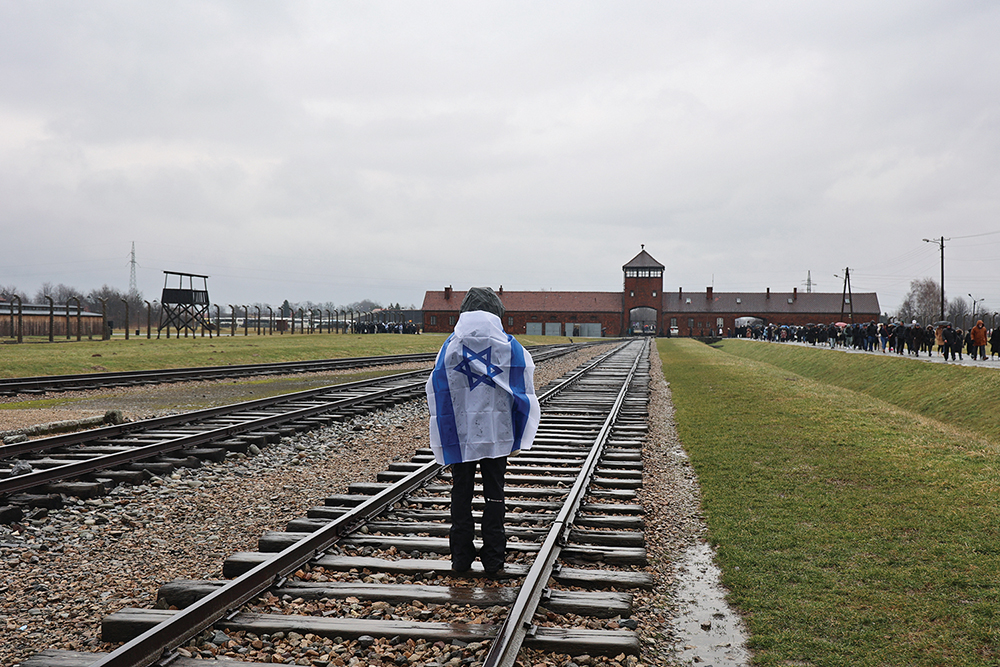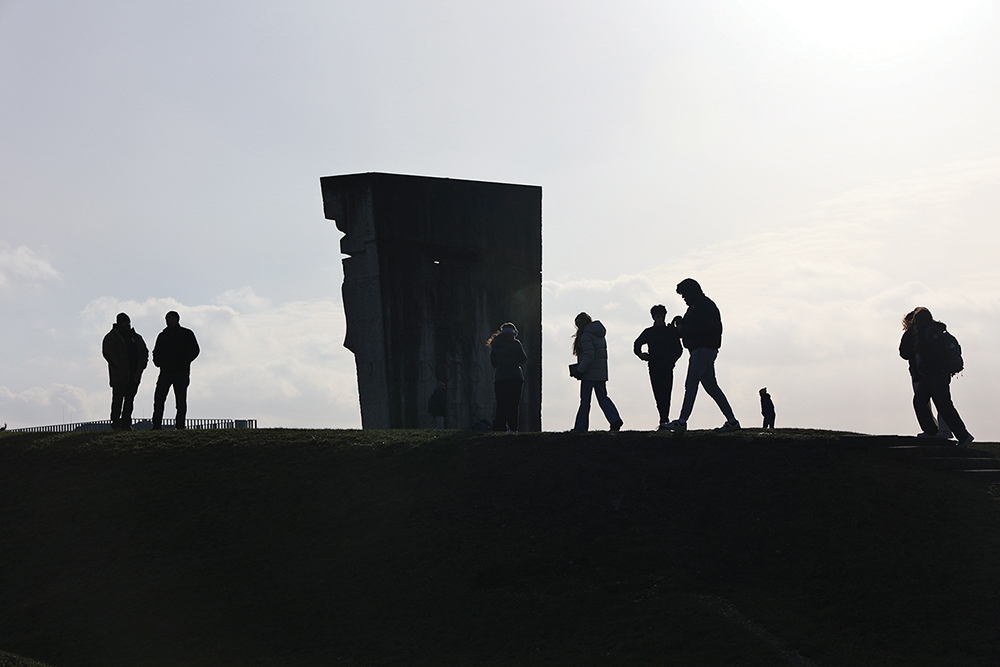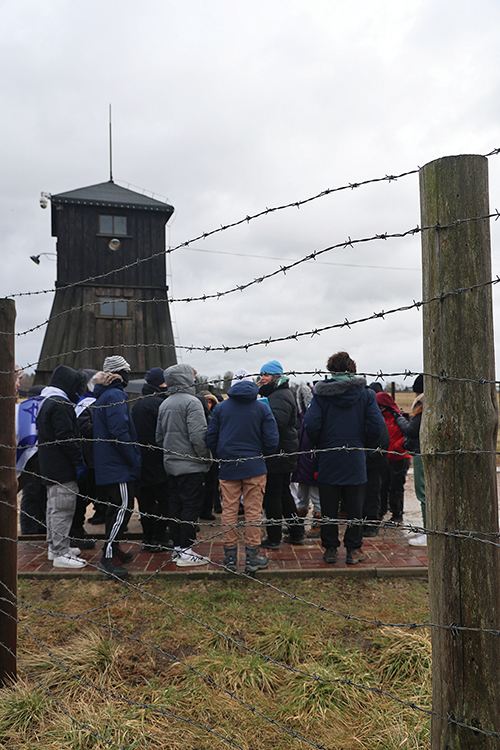
“וְתַגִּיעֵנוּ לִמְחוֹז חֶפְצֵנוּ לְחַיִּים וּלְשִׂמְחָה וּלְשָׁלוֹם” “And [God, may you] cause us to reach our destination in life, joy, and peace.” –Tefilat HaDerech
We recited Tefilat Haderech a few weeks ago, right before my 12th grade class at The Leffell School left for Poland, but it didn’t feel right. How could we ask for these things as we embarked on a trip to witness death, sorrow and war? This was quite literally the opposite of what this prayer asks for.
As much I’ve learned about the Shoah, being at a concentration camp in person is a uniquely different experience. Seeing the hair and kitchen equipment of Jews who were murdered at Auschwitz being displayed in cases added an especially personal layer to the experience. Imagining the people the displayed hair belonged to using the pots and pans for Shabbat dinners, and how everything was taken from them before they were killed, never to be used again, was extremely powerful.
Auschwitz II Birkenau felt different than Auschwitz I because it did not include a museum, and the empty fields where barracks once stood were ten times the size of Auschwitz I, making the magnitude of the place hard to understand despite being there in person. Halfway through our visit to Auschwitz II Birkenau, a downpour began, and as the day went on the rain grew heavier and heavier. We were all soaking wet but despite our discomfort, we were still bundled up in many layers of warm winter clothes. I couldn’t help but imagine what it was like being exposed to those extreme conditions with nothing for protection, and I suddenly felt lucky to be only slightly cold while drippinging wet, knowing a comfortable bus seat and warm soup was awaiting me.

While Auschwitz I and II were crowded with other visitors, we were the only group at Majdanek at the time we toured. We were not alone in the camp however. Murders of crows flew overhead sporadically throughout the visit, adding such an eerie feel to it all. Witnessing the credibility of what occurred in the gas chambers at Majdanek with blue dye staining the walls from the Zyklon B gas was uncanny and made the whole experience feel more real. Two days later, seeing the trenches in the Łopuchowo Forest, where people witnessed others being shot and buried while knowing their own turn to be killed was moments away, was extremely difficult.
But I would be remiss if I said that the whole trip was experienced this way, through this lens of darkness. Scattered throughout the week were moments of highs that matched the intensity of the low points. We visited shuls that were once centers of Jewish life but no longer have a congregation, and we filled the buildings with our voices. We prayed in a synagogue in Łańcut whose walls were lined with the words of Tehillim and gorgeous art depicting verses from Pirkei Avot.
Another entrancing synagogue was the one we visited in Tykocin with all the verses of Lecha Dodi decorating the walls. While the beauty of the art in these synagogues was like nothing I had ever seen before, the davening was even more magnificent. The most meaningful tefillah experience I have ever had with my grade was at a shul in Oswiecim, the town right outside of Auschwitz. This was the loudest I ever heard my grade daven, and seeing everyone sing together as we prepared ourselves for the visit to Auschwitz that day was a moment of strength in our community that I will never forget.
The joy we experienced in Poland reached outside of tefillot and into our learning. We visited Yehsivat Khokhmei Lublin, the birthplace of Daf Yomi, and studied the page of Talmud for that day together as a grade. We conversed, debated and questioned each other and the text on the topic of who can derive value from the baby of a stolen cow or sheep. We filled this Yeshiva that was raided by the Nazis less than 100 years ago with our study and brought ancient text to life by relating the cases to our time.

While not a historical site, one of the most enjoyable activities of the trip was meeting with Polish high school students at their school. We split up into groups and talked about our favorite movies, foods, parts of our religion and hobbies. Not a single student I met at the Polish school had ever met a Jew before, but they expressed their gratitude for how friendly we were to them because their only previous conception of Jews was that they are usually mean. The students gave us tours of their school, walking us through what a day looks like to them, and we culminated the gathering by dancing to a mix of Polish, American, and Israeli music.
Despite the confusion I had at first about why we recited a prayer for peace, joy and life before a trip that was destined to be about the reverse, I learned from this experience that this tefillah is about hope. We ask to reach our destination in life, joy and peace because these ideals can be woven into our lives even at times when we don’t expect them.
Lily Lebwohl is a 12th grade student at The Leffell School in Westchester.










